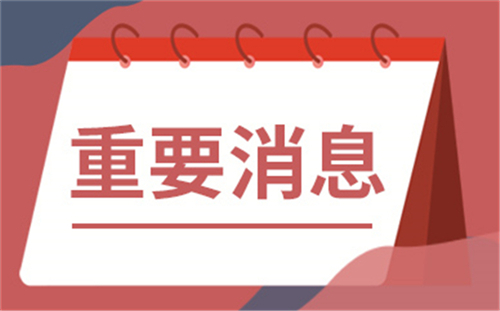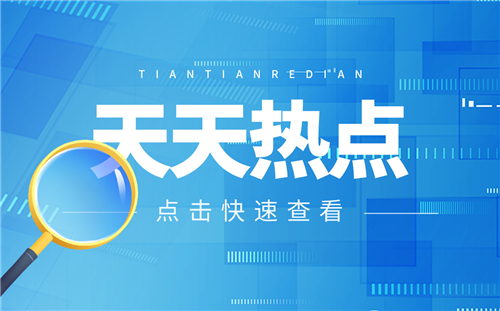每日焦点!MOHO Tutorial 1.5: Animation
This tutorial continues on from the previous three, moving into the animation features of Moho. You can either continue on with your project from the previous tutorial, or you can use a file that has been created for you - it’s named “Tutorial 1.4” and it’s located in the “Tutorials/1 - Basics” subfolder within your custom content folder.
There are three basic ways to animate objects in Moho:
 (相关资料图)
(相关资料图)
• animating an entire layer,
• using bones to animate parts of an object,
• animating the individual points on an object These three types can be combined to make very complex animations. This tutorial will walk you through all three types of animation.
Open your previous project (or the “Tutorial 1.4” file) in Moho. Make sure all the layers are visible by clicking to turn on each layer in the Layers window.
本教程从前三个继续,进入 Moho 的动画功能。 您可以继续上一个教程中的项目,也可以使用为您创建的文件 - 它名为“Tutorial 1.4”,位于自定义内容文件夹中的“Tutorials/1 - Basics”子文件夹中 .
在 Moho 中为对象设置动画有三种基本方法:
• 为整个图层制作动画,
• 使用骨骼为对象的某些部分设置动画,
• 为对象上的各个点设置动画 这三种类型可以组合起来制作非常复杂的动画。 本教程将引导您完成所有三种类型的动画。
在 Moho 中打开您之前的项目(或“Tutorial 1.4”文件)。 通过单击打开“图层”窗口中的每个图层,确保所有图层都可见。
Layer Animation
图层动画是让对象在 Mohoanimation 中四处移动的最简单方法。 您可以移动对象的方式受到限制,但在某些情况下,这就是您所需要的。 图层动画移动整个图层,就好像它是在一块玻璃上绘制的一样。
单击“图层”窗口中的“云”图层以将其激活。 接下来,将当前时间设置为第 72 帧。这是在 Timeline 窗口中完成的。 要设置时间,请横向滚动时间线面板(如有必要),直到在顶部的标尺中看到数字 72。 点击数字72,时间标记会跳到那一帧,如下图
If you do not see multiple channels in the timeline, you may have Moho set to collapse them. Choose Edit > Preferences, and uncheck the “Consolidate timeline channels” option in the Options tab. This displays all animation channels in the timeline.
如果您在时间线中没有看到多个通道,您可能将 Moho 设置为折叠它们。 选择“编辑”>“首选项”,然后取消选中“选项”选项卡中的“合并时间线通道”选项。 这将显示时间轴中的所有动画通道。
In Moho, an important concept is to learn the importance of frame zero. At the far left end of the timeline is a frame marked zero. When the time is set to zero, you are in Moho’s creation mode. For now, you should only draw, add bones, or create other objects at frame zero. When Moho is at any other frame, you are animating the objects you have created. As you get more comfortable with Moho, you can choose to draw objects at other frames, but for now it’s best only to create new objects when the time is set to frame zero. You can switch back to frame zero at any time by pressing the rewind button, or by clicking on the number 0 in the timeline. For now, leave the time at frame 72.
在 Moho 中,一个重要的概念是学习零帧的重要性。 在时间线的最左端是标记为零的帧。 当时间设置为零时,您处于 Moho 的创建模式。 目前,您应该只在零帧处绘制、添加骨骼或创建其他对象。 当 Moho 位于任何其他帧时,您正在为您创建的对象设置动画。 随着您对 Moho 越来越熟悉,您可以选择在其他帧处绘制对象,但目前最好仅在时间设置为零帧时创建新对象。 您可以随时通过按下倒带按钮或单击时间轴中的数字 0 切换回零帧。 现在,将时间留在第 72 帧。
Select the Transform Layer tool from the toolbar从工具栏中选择变换图层工具。
Click and drag to the right in the working area to move the cloud layer to the right. You can press the Shift key, if desired, to constrain the movement to a straight line.:在工作区域中单击并向右拖动,将云层向右移动。 如果需要,您可以按 Shift 键将移动限制为直线。:
Notice that a marker appeared in the timeline at frame 72. (You may have to scroll downwards to see the marker.) This marker represents a keyframe - a point in time at which the layer has been given a position. There are several animation channels displayed in the Timeline panel. This keyframe appeared in the Layer Translation channel, because that’s what type of action you just performed - you translated (moved) a layer.
请注意,时间线中的第 72 帧出现了一个标记。(您可能必须向下滚动才能看到该标记。)该标记表示一个关键帧 - 一个时间点,在该时间点上已为图层指定了一个位置。 “时间轴”面板中显示了多个动画通道。 这个关键帧出现在图层翻译通道中,因为这就是您刚刚执行的操作类型 - 您翻译(移动)了一个图层。
Try out the animation so far: press the play button at the bottom-left of the main window. The animation loops when it reaches the end (in this case frame 240). When you’ve seen enough, press the stop button.
If you prefer, you can shorten the length of the animation to 72 frames, so that it will loop back to the beginning once it reaches the last keyframe. Simply change the total number of frames to 72 as shown below.
试用目前的动画:按下主窗口左下角的播放按钮。 动画在到达结尾时循环播放(在本例中为第 240 帧)。 当你看够了,按下停止按钮。
如果您愿意,可以将动画的长度缩短到 72 帧,这样一旦到达最后一个关键帧,它就会循环回到开头。 只需将总帧数更改为 72,如下所示。
Bone animation uses skeleton structures to move an object around. You got a good feel for how bones work in the previous tutorial when you used the Manipulate Bones tool. When animating bones you use very similar tools.
Activate the Skeleton layer by clicking its entry in the Layer panel.
骨骼动画使用骨架结构来移动对象。 当您使用“操纵骨骼”工具时,您对上一教程中骨骼的工作原理有了很好的了解。 为骨骼设置动画时,您使用非常相似的工具。
通过单击图层面板中的条目来激活骨架图层。
Set the time to frame 12 by clicking the number 12 in the Timeline window. (You may have to scroll the Timeline window before you can see the number 12.)
Now, pick the Manipulate Bones tool in the toolbar. Click and drag the bones in Frank’s legs until they are positioned as shown below:
通过单击时间轴窗口中的数字 12 将时间设置为第 12 帧。 (您可能需要滚动时间轴窗口才能看到数字 12。)
现在,选择工具栏中的操纵骨骼工具。 单击并拖动 Frank 腿中的骨骼,直到它们的位置如下所示:
Note that the Manipulate Bones tool works differently at frame 12 than it did at frame 0 in the previous tutorial. At frame 0, this tool is used to test a bone system, and doesn’t permanently modify the bones. However, when you are animating bones (at any frame other than 0), the bones do hold their new position.
Next, pick the Transform Bone tool. Click on Frank’s spine bone and drag it downwards a bit:
请注意,操纵骨骼工具在第 12 帧的工作方式与在上一教程中在第 0 帧的工作方式不同。 在第 0 帧,此工具用于测试骨骼系统,不会永久修改骨骼。 但是,当您为骨骼设置动画时(在 0 以外的任何帧),骨骼确实会保持其新位置。
接下来,选择变换骨骼工具。 单击 Frank 的脊椎骨并将其向下拖动一点:
To transform the bone, drag from the bottom control point on the bone. For more information about the control points in the Transform Bone tool, see “Transform Bone” on page 92 in your Moho Users Manual.
要变换骨骼,请从骨骼上的底部控制点拖动。 有关变换骨骼工具中控制点的更多信息,请参阅 Moho 用户手册中第 92 页的“变换骨骼”。
Next, set the time to frame 24 and choose the Bone > Reset All Bones menu command. Press the play button to watch your animation, and press stop when you’re done.
接下来,将时间设置为第 24 帧并选择“骨骼”>“重置所有骨骼”菜单命令。 按播放按钮观看动画,完成后按停止。
When you played back the animation, you probably noticed that after frame 24, Frank doesn’t move any more. You could add more keyframes by setting the time to some later frame and moving Frank’s bones some more, but let’s try out Moho’s animation looping feature.
In the timeline, you should see a group of keyframes at frame 24. These keys represent bone movement (the spine bone moving up and down) and bone rotation (the bending legs). Drag a rectangle around these keyframes to select them:
当您回放动画时,您可能注意到在第 24 帧之后,弗兰克不再移动。 您可以通过将时间设置为稍后的帧并进一步移动 Frank 的骨骼来添加更多关键帧,但让我们尝试一下 Moho 的动画循环功能。
在时间轴中,您应该在第 24 帧处看到一组关键帧。这些关键帧代表骨骼运动(脊柱骨骼上下移动)和骨骼旋转(弯曲的腿)。 在这些关键帧周围拖动一个矩形以选择它们:
Next, right-click on one of these selected keys. A popup menu will appear. Select “Cycle...” from the popup menu.接下来,右键单击这些选定的键之一。 将出现一个弹出菜单。 从弹出菜单中选择“循环...”。
What you’re telling Moho is that you want these keys to cycle back to an earlier point in the timeline. A dialog will appear asking you what frame to cycle back to - enter the settings shown below. You’re telling Moho that on this keyframe, the bone movement should cycle back to frame 1.
您告诉 Moho 的是您希望这些键循环回到时间线中的较早点。 将出现一个对话框,询问您要循环回到哪个帧 - 输入如下所示的设置。 你告诉 Moho 在这个关键帧上,骨骼运动应该循环回到第 1 帧。
Close the Keyframe dialog and press the play button to see the difference. An animation channel with cycling turned on will repeat its animation over and over indefinitely. Typically this would be used for some kind of background element, not a foreground character like Frank, but it’s a great time saver. In the timeline you can see an indication of the cycling in the bone channels:关闭关键帧对话框并按下播放按钮查看差异。 开启循环的动画通道将无限期地重复其动画。 通常这将用于某种背景元素,而不是像 Frank 这样的前景角色,但它可以节省大量时间。 在时间线中,您可以看到骨骼通道中的循环指示:










